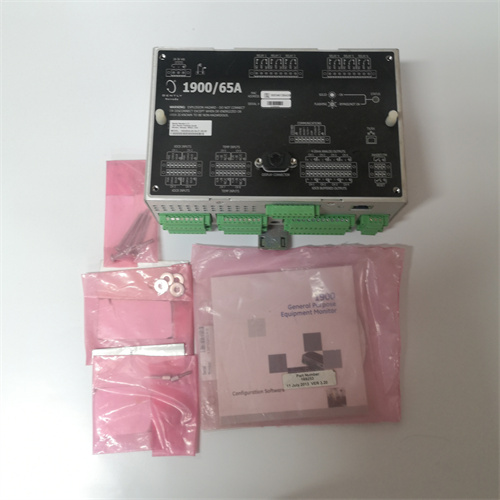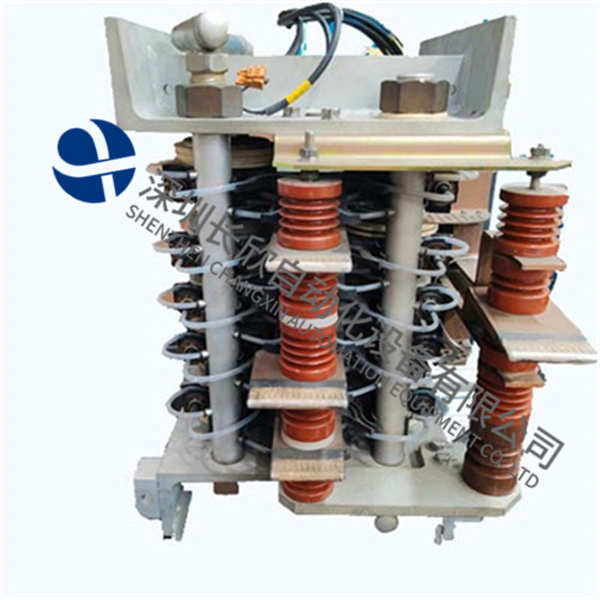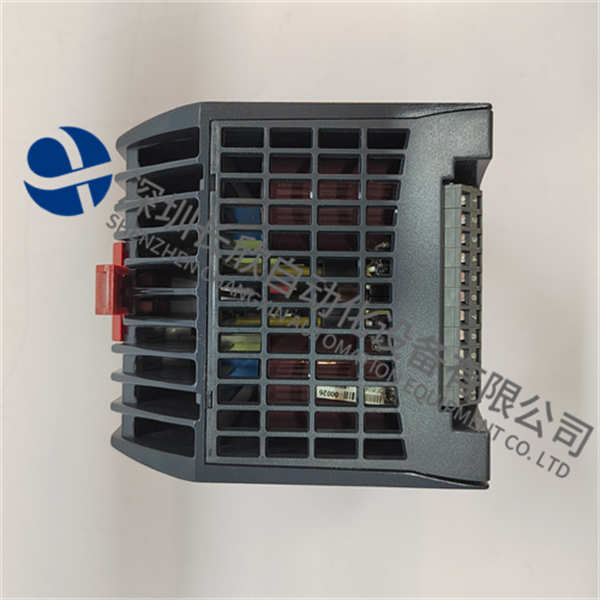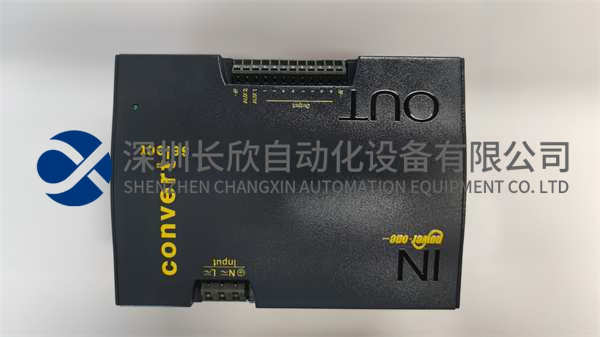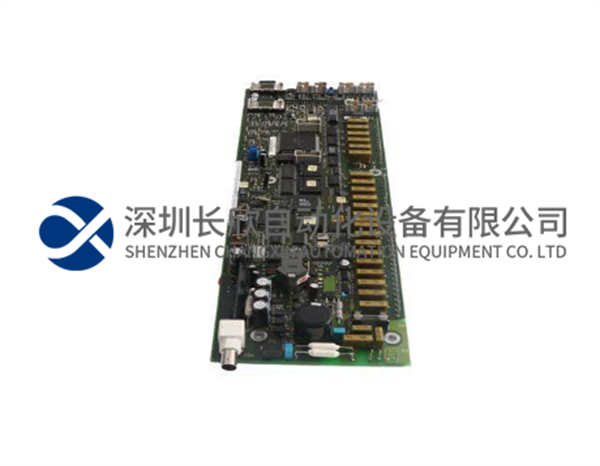描述
BENTLY 190065A-00-04-01-00-00是Bently Nevada公司的一款工业设备监控器,主要用于监测旋转设备(如涡轮机、压缩机、泵等)的振动、温度、压力等关键参数,以确保设备的安全运行和故障预防。以下是其核心功能与技术参数的详细介绍:
核心功能
振动监测
用于测量和监测旋转设备的振动水平,能够检测异常振动情况,从而评估机械性能,提前发现潜在故障。
温度监测
监测设备温度,确保其在适宜的工作温度范围内运行,防止因过热导致的设备损坏。
压力监测
监测设备压力变化,及时发现压力异常,保障设备运行的安全性和稳定性。
数据采集与分析
采集并存储相关参数的数据,提供分析工具,辅助运维人员监测设备状态,识别潜在问题。
报警功能
当监测到异常情况时,可发出警报或报警信号,通知操作人员采取必要措施,防止事故发生。
远程监测
支持通过网络连接进行实时远程监控,适用于分布式设备的集中管理,提高运维效率。
技术参数
传感器输入
提供四个传感器输入接口,支持多种传感器类型,包括加速度计、速度传感器或接近传感器。
每个温度输入支持E、J、K和T型热电偶以及2线或3线热电阻,满足不同温度监测需求。
输出接口
配备六个继电器输出、四个4-20 mA记录仪输出和一个专用缓冲输出,可灵活配置以满足不同的控制需求。
通信协议
支持Modbus网关选件,可直接向Modbus客户端(如DCS、SCADA、PLC或System 1软件)提供静态变量、状态、事件列表、时间和日期信息,方便系统集成。
配置与操作
用户可使用1900配置软件对继电器触点进行配置,根据通道状态(确定、警报和危险)控制触点的打开或关闭,并在记录仪输出上提供来自任何通道的变量数据。
环境适应性
设计用于工业环境,具备良好的耐用性和可靠性,能够在恶劣条件下稳定运行。
应用场景
制造业:监测生产设备的振动和温度,确保设备高效运行。
能源领域:用于发电设备(如涡轮机、压缩机)的状态监测,保障能源供应的稳定性。
交通运输:监测轨道交通、船舶等设备的机械状态,提高运行安全性。
石油化工:监测泵、压缩机等关键设备的运行参数,防止因设备故障导致的生产中断。
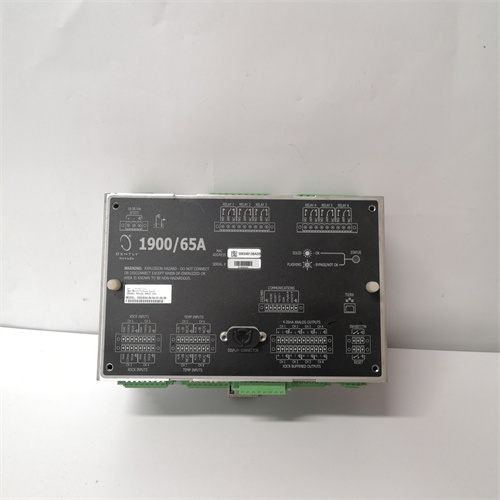
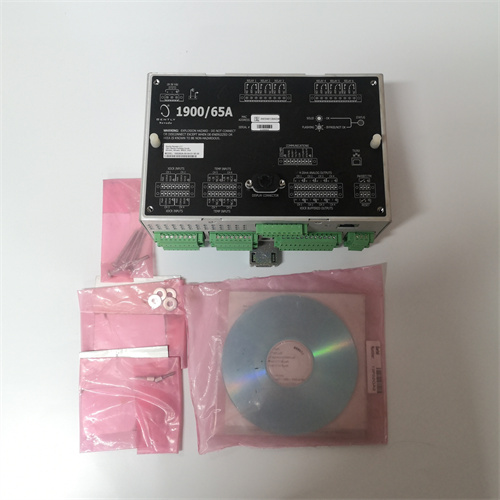
BENTLY 190065A-00-04-01-00-00 is an industrial equipment monitor from Bently Nevada,mainly used to monitor key parameters such as vibration,temperature,and pressure of rotating equipment(such as turbines,compressors,pumps,etc.)to ensure safe operation and fault prevention of equipment.The following is a detailed introduction to its core functions and technical parameters:
Core functions
Vibration monitoring
Used to measure and monitor the vibration level of rotating equipment,it can detect abnormal vibration conditions,thereby evaluating mechanical performance and discovering potential faults in advance.
Temperature monitoring
Monitor the temperature of the equipment to ensure that it operates within the appropriate operating temperature range to prevent equipment damage caused by overheating.
Pressure monitoring
Monitor equipment pressure changes,detect pressure abnormalities in a timely manner,and ensure the safety and stability of equipment operation.
Data collection and analysis
Collect and store data on relevant parameters,provide analysis tools,and assist operation and maintenance personnel in monitoring equipment status and identifying potential problems.
Alarm function
When an abnormal situation is detected,an alarm or alarm signal can be issued to notify the operator to take necessary measures to prevent accidents.
Remote Monitoring
Supports real-time remote monitoring via network connection,suitable for centralized management of distributed equipment,and improves operation and maintenance efficiency.
Technical Parameters
Sensor Input
Provides four sensor input interfaces,supporting a variety of sensor types,including accelerometers,velocity sensors,or proximity sensors.
Each temperature input supports E,J,K,and T-type thermocouples and 2-wire or 3-wire thermal resistors to meet different temperature monitoring needs.
Output Interface
Equipped with six relay outputs,four 4-20 mA recorder outputs,and one dedicated buffer output,it can be flexibly configured to meet different control needs.
Communication Protocol
Supports Modbus gateway option,which can directly provide static variables,status,event list,time and date information to Modbus clients(such as DCS,SCADA,PLC,or System 1 software)to facilitate system integration.
Configuration and Operation
Users can use 1900 configuration software to configure relay contacts,control the opening or closing of contacts according to channel status(OK,Alarm,and Danger),and provide variable data from any channel on the recorder output.
Environmental adaptability
Designed for industrial environments,it has good durability and reliability and can operate stably under harsh conditions.
Application scenarios
Manufacturing:Monitor the vibration and temperature of production equipment to ensure efficient operation of the equipment.
Energy field:Used for status monitoring of power generation equipment(such as turbines and compressors)to ensure the stability of energy supply.
Transportation:Monitor the mechanical status of equipment such as rail transportation and ships to improve operational safety.
Petrochemical:Monitor the operating parameters of key equipment such as pumps and compressors to prevent production interruptions due to equipment failures.

